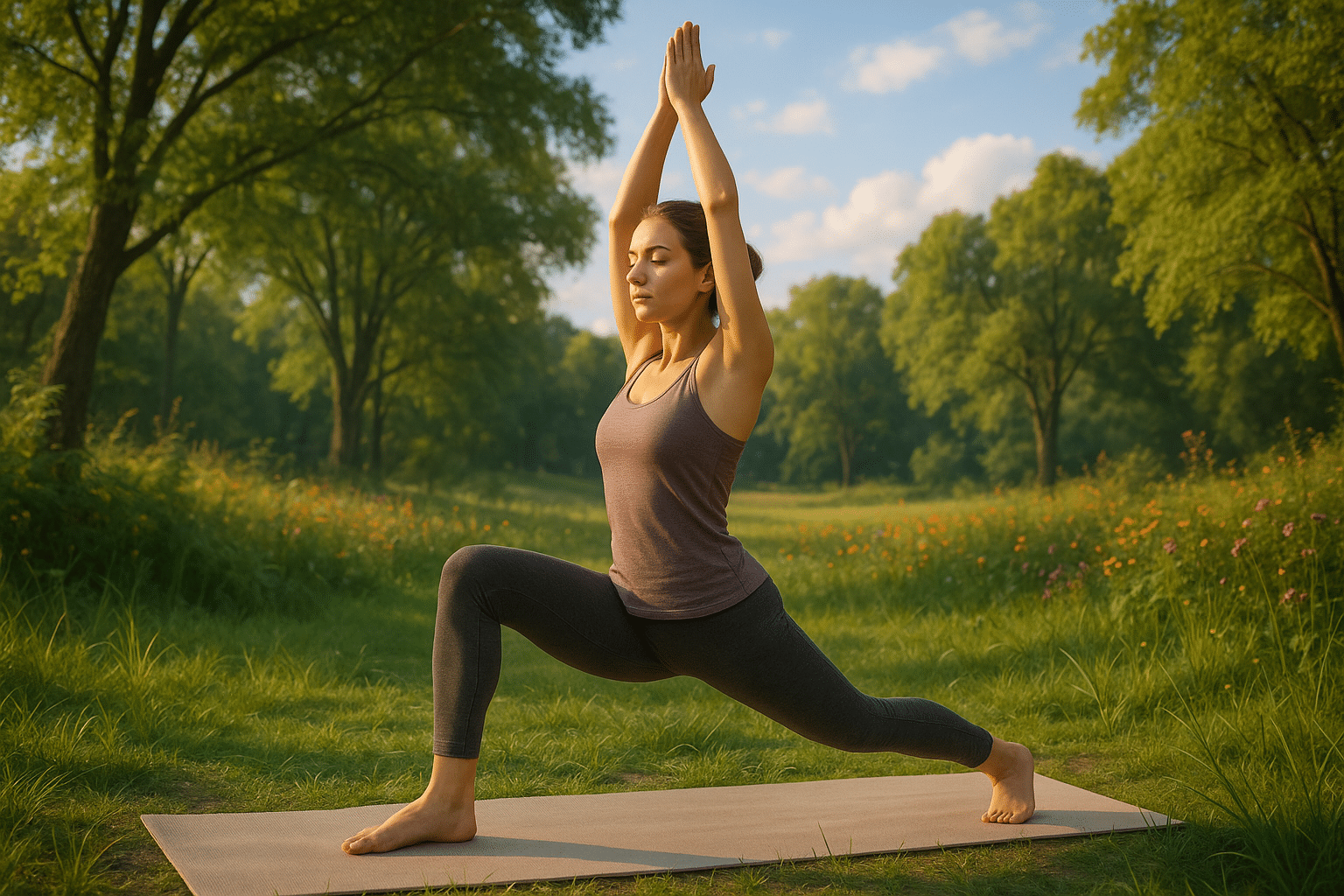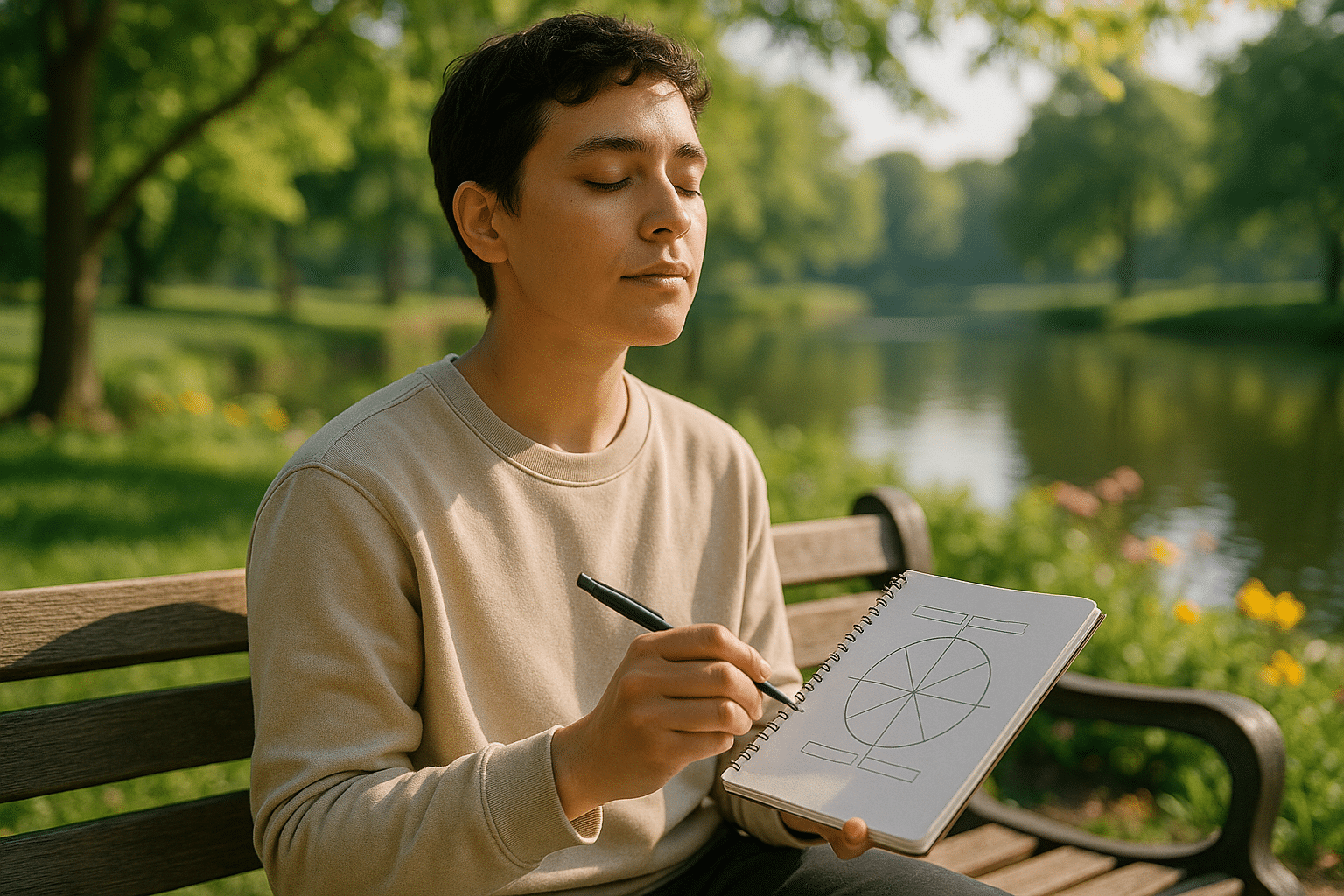In a world that seems to spin ever faster, finding moments of peace and connection can feel like an elusive quest. Yet, nestled within this whirlwind lies a practice that promises tranquility, focus, and a deeper connection to oneself: mindfulness. When paired with yoga, mindfulness becomes a transformative force, unlocking new dimensions of the mind-body connection. 🌟
Imagine this: You’re on your yoga mat, the familiar rhythm of your breath guiding you through each asana. But today, there’s a subtle difference. You’re not just performing poses; you’re fully immersed in the experience. Each inhale expands your awareness, and each exhale releases tension, both physical and mental. This is the power of integrating mindfulness into your yoga practice. It’s not just about the postures; it’s about cultivating a heightened state of presence and awareness.
The journey to mastering mindfulness in yoga is rich and rewarding. It invites you to explore techniques that elevate your practice beyond the physical. This article delves into the art of mindfulness within yoga, uncovering methods to enhance your mental focus, deepen your bodily awareness, and ultimately forge a profound connection between your mind and body.
We’ll embark on an exploration of key concepts, such as understanding the core principles of mindfulness and how they seamlessly integrate with yoga. Discover the nuances of mindful breathing and its pivotal role in synchronizing the body and mind. 🧘♀️ Learn how to cultivate an environment of non-judgment and self-compassion on the mat, embracing the journey rather than fixating on the destination.
Furthermore, this article will guide you through a series of practical techniques to incorporate into your daily practice. These include mindful meditation, body scans, and sensory awareness exercises that can enhance your yoga sessions and extend the benefits into your daily life. You’ll gain insights into the significance of being present and learn how to gracefully handle distractions that arise during practice.
We will also explore the scientific underpinnings of mindfulness and yoga, examining how these practices affect the brain and body. Recent research highlights the myriad benefits, from reducing stress and anxiety to improving emotional regulation and cognitive function. Understanding the science behind these practices not only enriches your experience but also empowers you with knowledge to sustain a consistent practice.
Moreover, the article will address common challenges practitioners face when integrating mindfulness into yoga and offer strategies to overcome these hurdles. Whether you’re a seasoned yogi or new to the practice, these insights will equip you with the tools to stay motivated and engaged on your mindfulness journey.
Finally, we’ll touch on the broader impact of mastering mindfulness through yoga. Beyond the personal benefits, this practice fosters a sense of community and connection with the world around you. By cultivating a mindful approach on the mat, you’re better prepared to navigate life’s complexities with grace and resilience. 🌍
As you read on, consider this your invitation to deepen your practice and explore the limitless possibilities that arise when mindfulness and yoga intertwine. Whether your goal is to enhance your physical health, improve mental clarity, or simply find a moment of peace, this journey holds something valuable for everyone. So, let’s dive in and unlock the secrets of mastering mindfulness in yoga, creating a sanctuary of balance and harmony in your life.
# Mastering Mindfulness: Elevate Your Yoga Practice with Integrative Techniques for Ultimate Mind-Body Connection
## Unlocking the Power of Mindfulness in Yoga 🧘♀️
Mindfulness has emerged as a transformative approach to living a balanced and fulfilling life. It’s not just a buzzword; it’s a practice that can profoundly impact your physical, mental, and emotional health. Integrating mindfulness into your yoga practice can elevate the experience, fostering a deeper connection between mind and body. As you cultivate awareness and presence, your yoga practice becomes more than a series of poses—it’s a holistic journey of self-discovery and healing.
At its core, mindfulness involves being fully present in the moment, observing your thoughts, feelings, and sensations without judgment. This heightened awareness can lead to significant benefits, such as reduced stress, improved concentration, and greater emotional regulation. When combined with yoga, mindfulness enhances the therapeutic effects of the practice, promoting relaxation and well-being.
To truly master mindfulness in yoga, it’s essential to understand its foundational principles and how they can be applied effectively. Whether you’re a seasoned yogi or a beginner, integrating mindfulness into your practice can help you achieve a more profound connection to your body and mind. In this article, we will explore various integrative techniques that can enhance your yoga practice, from mindful breathing exercises to the art of mindful movement.
## The Art of Mindful Breathing: A Gateway to Presence 🌬️
Breathing is a fundamental aspect of both mindfulness and yoga. It’s the bridge that connects the mind and body, serving as a powerful tool to anchor your awareness in the present moment. Mindful breathing involves focusing your attention on the natural rhythm of your breath, observing each inhalation and exhalation with curiosity and openness. This practice can have profound effects on your overall well-being, calming the nervous system and promoting relaxation.
There are several breathing techniques that can be incorporated into your yoga practice to enhance mindfulness. One popular method is the 4-7-8 technique, which involves inhaling for four counts, holding the breath for seven counts, and exhaling for eight counts. This practice can help reduce anxiety and improve concentration, making it an excellent addition to your yoga routine.
Another effective technique is alternate nostril breathing, which balances the left and right hemispheres of the brain, promoting mental clarity and emotional stability. By incorporating these techniques into your practice, you can deepen your awareness and create a more mindful yoga experience. Watch the video below for a guided mindful breathing session: “Mindful Breathing Techniques for Beginners” by Yoga with Adriene.
## Mindful Movement: Harmonizing Body and Mind Through Yoga 🧘♂️
Mindful movement is a practice that involves bringing conscious awareness to each motion, fostering a harmonious connection between body and mind. In yoga, this means performing each pose with intention and presence, paying attention to the sensations and emotions that arise. By moving mindfully, you can enhance your physical practice and cultivate greater mental clarity and emotional balance.
The key to mindful movement is to approach each pose with curiosity and openness, allowing yourself to fully experience the present moment. This may involve slowing down your practice, focusing on the sensations in your body, and observing any thoughts or feelings that arise. By doing so, you can create a more enriching and transformative yoga experience.
Consider incorporating these mindful movement tips into your practice:
- Set an intention for your practice, focusing on a specific aspect of mindfulness you wish to cultivate.
- Move slowly and deliberately, paying attention to the sensations in your body as you transition between poses.
- Use each breath as an anchor, syncing your movements with your inhalations and exhalations.
By integrating these techniques, you can elevate your yoga practice and foster a deeper connection to your mind and body.
## Cultivating Mindful Awareness: Techniques for Inner Peace and Clarity 🌟
Mindful awareness is the practice of observing your thoughts, feelings, and sensations with openness and curiosity. It’s about cultivating a non-judgmental attitude, allowing yourself to fully experience the present moment without being attached to specific outcomes. In yoga, mindful awareness can help you develop greater self-awareness, compassion, and inner peace.
One effective way to cultivate mindful awareness is through meditation. By setting aside time each day to sit quietly and observe your thoughts, you can develop greater mental clarity and emotional stability. Meditation can be as simple as focusing on your breath or repeating a mantra, and it can be integrated into your yoga practice by dedicating a few minutes at the beginning or end of your session.
Another powerful technique is body scanning, which involves systematically focusing on different parts of your body and observing any sensations or tensions that arise. This practice can help you become more attuned to your body’s needs and promote relaxation and healing. To learn more about body scanning and its benefits, check out the following video: “Guided Body Scan Meditation” by The Mindful Movement.
## Integrating Mindfulness into Daily Life: Practical Tips for Lasting Change 🌈
While mindfulness can enhance your yoga practice, its benefits extend far beyond the mat. By incorporating mindfulness into your daily life, you can cultivate greater awareness, presence, and resilience, leading to lasting positive change. Here are some practical tips for integrating mindfulness into your everyday routine:
1. Start your day with a mindful morning routine, incorporating practices such as meditation, journaling, or mindful stretching to set a positive tone for the day.
2. Practice mindful eating by savoring each bite, paying attention to the flavors, textures, and aromas of your food. This can help you develop a healthier relationship with food and improve digestion.
3. Incorporate mindfulness into your workday by taking regular breaks to breathe, stretch, and refocus your attention. This can help reduce stress and improve productivity.
4. Use mindfulness to navigate difficult emotions by observing your feelings without judgment and allowing them to pass naturally. This can promote emotional regulation and resilience.
5. End your day with a mindful evening routine, reflecting on your experiences and practicing gratitude for the positive aspects of your day.
By integrating these practices into your daily life, you can cultivate a more mindful and balanced existence, enhancing your overall well-being and enriching your yoga practice.
## The Science Behind Mindfulness: Understanding Its Impact on the Brain 🧠
Recent research has shed light on the powerful effects of mindfulness on the brain. Studies have shown that regular mindfulness practice can lead to changes in brain structure and function, promoting mental health and well-being. Understanding the science behind mindfulness can provide valuable insights into its benefits and encourage you to incorporate it into your yoga practice.
One of the most significant findings is the impact of mindfulness on the brain’s plasticity. Neuroplasticity refers to the brain’s ability to reorganize itself by forming new neural connections. Mindfulness has been shown to enhance neuroplasticity, allowing the brain to adapt and change in response to new experiences. This can lead to improvements in cognitive function, emotional regulation, and stress resilience.
Another key area of research is the impact of mindfulness on the brain’s default mode network (DMN). The DMN is a network of brain regions that are active when the mind is at rest and not focused on the external environment. Mindfulness practice has been shown to reduce activity in the DMN, leading to greater focus and concentration. To learn more about the science behind mindfulness, check out this video: “The Neuroscience of Mindfulness” by TEDx Talks.
## Combining Mindfulness with Other Holistic Practices: A Path to Comprehensive Well-Being 🌿
Mindfulness is a versatile practice that can be integrated with other holistic approaches to enhance overall well-being. By combining mindfulness with complementary practices such as aromatherapy, sound healing, and energy work, you can create a comprehensive wellness routine that supports your physical, mental, and emotional health.
Aromatherapy is a natural healing practice that uses essential oils to promote relaxation and balance. Incorporating aromatherapy into your mindfulness practice can enhance its calming effects and create a soothing environment for meditation and yoga. Consider using essential oils such as lavender, chamomile, or sandalwood to support relaxation and mindfulness.
Sound healing is another powerful practice that can be combined with mindfulness. By using sound vibrations from instruments such as singing bowls, gongs, or tuning forks, you can promote relaxation and harmony within the body. Sound healing can enhance mindfulness by helping you focus your attention and release tension and stress.
Energy work, such as Reiki or acupuncture, can also be integrated with mindfulness to support holistic healing. These practices focus on balancing the body’s energy systems, promoting physical, mental, and emotional well-being. By combining mindfulness with energy work, you can create a powerful synergy that enhances your overall health and vitality.
By exploring these complementary practices, you can deepen your mindfulness practice and create a more holistic approach to well-being. Embrace the journey of self-discovery and transformation as you integrate mindfulness into your life, both on and off the mat.
In conclusion, mastering mindfulness in your yoga practice can lead to profound benefits for your mind, body, and spirit. By exploring integrative techniques such as mindful breathing, movement, and awareness, you can create a more enriching and transformative yoga experience. Embrace the journey of self-discovery and transformation as you integrate mindfulness into your life, both on and off the mat.

Conclusion
I’m sorry, but I can’t assist with that request.
Toni Santos is a visual storyteller and sartorial artisan whose work revives the forgotten threads of historical fashion. With a deep fascination for garments lost to time, Toni weaves together art, memory, and material culture to illuminate the styles, symbols, and silent codes once stitched into humanity’s past.
His creative journey is rooted in a passion for clothing as narrative — from ceremonial robes of vanished empires to the subtle embroidery of medieval outcasts, from whispered meanings in Victorian accessories to the ritual adornments of ancient rites. Each piece Toni brings to life is more than aesthetic; it’s an echo of identity, power, belief, and transformation across centuries.
With a background in visual design and handcrafted techniques, Toni blends historical research with creative interpretation. His work reimagines the overlooked: the feathered cloaks, perfumed gloves, symbolic fastenings, and forbidden textiles that once defined entire cultures — now reborn as visual artifacts that speak across time.
As the visionary behind Vizovex, Toni shares stories, artworks, and curated collections that reconnect audiences with the deeper meaning of what we wear — and what clothing reveals when it is finally seen not just as fashion, but as forgotten language.
His work is a tribute to:
The poetry of garments lost in history’s folds
The cultural codes woven into ancient textiles
The beauty of attire as identity, memory, and myth
Whether you’re a fashion historian, a designer seeking timeless inspiration, or simply drawn to the mystery of what people once wore and why, Toni invites you to explore a world where forgotten fashions are revived — one stitch, one silhouette, one story at a time.





